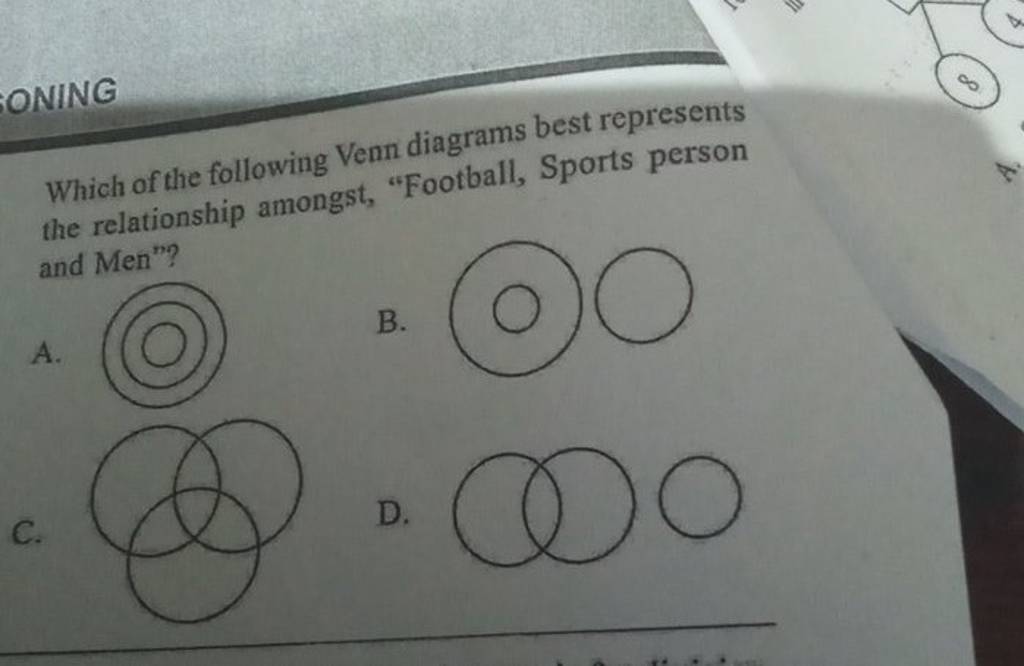Understanding Wellness as a Continuum: The Complete Guide to Holistic Health
The wellness continuum concept explain
Wellness is not plainly the absence of illness. Quite, it exists as a continuum — a dynamic, always change spectrum that encompass multiple dimensions of health and wellbeing. This continuum perspective challenges the traditional binary view of being either” healthy” or” sick” and rather recognize that we all exist someplace along a fluid scale of well bee that changes throughout our lives.
The wellness continuum model suggests that each person’s health status fall someplace between optimal wellness on one end and severe illness on the other. This framework acknowledge that wellness is not static but perpetually shift base on various factors include lifestyle choices, environmental influences, and life circumstances.
The multidimensional nature of the wellness continuum
What make the wellness continuum peculiarly valuable is its recognition that health extend beyond upright physical condition. True wellness encompass several interconnect dimensions:
Physical wellness
Physical wellness involve maintain a healthy body through nutrition, exercise, sleep, and preventive care. On the continuum, physical wellness range from peak physical condition to serious illness. Most people fluctuate within this range throughout their lives, move toward greater wellness through healthy habits or toward illness through neglect or unavoidable circumstances.
For example, someone might be physically fit with excellent cardiovascular health but simultaneously experience chronic back pain. This person exists at different points on the physical wellness continuum depend on which aspect of physical health we examine.
Mental and emotional wellness
Mental wellness spans from psychological flourish to severe mental illness. This dimension encompass emotional regulation, stress management, cognitive function, and overall psychological wellbeing.

Source: quizdbbarnstorms.z21.web.core.windows.net
A person might excel in their career while struggle with anxiety, place them at different points on the mental wellness continuum. The continuum model recognize these nuances quite than label someone as merely mentally healthy or unhealthy.
Social wellness
Social wellness involve maintain fulfil relationships and feeling connect to community. This dimension range from deep social integration and support to isolation and loneliness.
Someone might have a strong core group of friends but struggle with romantic relationships or family dynamics. The continuum acknowledge these variations within the social dimension.
Spiritual wellness
Spiritual wellness relate to find meaning and purpose in life, whether through religious practice, philosophical beliefs, or personal values. This dimension span from a profound sense of purpose and connection to existential distress.
Many people experience fluctuations in spiritual wellness throughout their lives as they navigate challenges that test their beliefs and values.
Environmental wellness
Environmental wellness consider how our surroundings affect our health and how we impact the environment. This range from live in harmony with a healthy environment to exist in toxic surroundings or contribute to environmental degradation.
Occupational wellness
Occupational wellness involve find satisfaction, enrichment, and balance in work. This dimension range from career fulfillment to workplace stress and dissatisfaction.
Why the continuum model matters for personal health
View wellness as a continuum offer several practical benefits for individuals seek to improve their health:
Recognition of progress quite than perfection
The continuum model acknowledge that small movements toward greater wellness are meaningful achievements. Instead, than see health as an altogether or nothing proposition, this perspectivecelebratese incremental improvements.
For someone begin a fitness journey, recognize that each workout move them incrementally along the continuum provide motivation level when optimal fitness seem distant. This perspective prevent the discouragement that frequently come from binary think about health.
Personalized approach to wellness
Since everyone exist at different points along various wellness dimensions, the continuum model encourage individualized approaches to health improvement. There be no one size fit all solution when wellness is view as multidimensional.
Someone might prioritize improve their sleep quality to move along the physical wellness continuum while another person might focus on strengthen social connections to advance their social wellness. Both approaches are valid base on individual starting points and needs.
Holistic perspective
The continuum model encourage attention to all dimensions of wellness quite than hyperfocused on one aspect of health. This holistic viewrecognizese the interconnectedness of different wellness dimensions.
For instance, improve sleep habits (physical wellness )frequently enhance mood and cognitive function ( (ntal wellness ),)hich can improve work performance ( oc(pational wellness ) an)relationships ( soci( wellness ).
)
Reduced stigma and greater self compassion
When health is view as a continuum instead than a binary state, it reduces the stigma associate with health challenges. Everyone exist someplace on the continuum quite than beingcategorizede as either healthy or unhealthy.
This perspective promote self compassion during health setbacks. Quite than see a lapse in exercise habits as” fall off the wagon, ” he continuum model recognize it as a temporary movement along the spectrum with the opportunity to move backward toward greater wellness.
Practical applications of the wellness continuum in daily life
Self assessment across dimensions
The continuum model provides a framework for honest self assessment. By evaluate your current position along each wellness dimension, you can identify areas for growth and celebration.
Consider rate yourself on a scale from 1 10 in each wellness dimension. This exercise frequently reveals surprising insights about which areas might benefitnear ton and resources.
Set realistic goals for movement along the continuum
Once you’ve assessed your current position, you can set goals for gradual movement along the continuum in priority areas. These goals should be specific, measurable, achievable, relevant, and time bin(( smar)).
For example, quite than aim for” perfect mental health ” an impossible standard ))you might set a goal to move from a 4 to a 6 on your mental wellness scale by practice daily meditation for ten minutes over the next month.
Track progress over time
The continuum model encourages regular reassessment to track movement along various wellness dimensions. This practice provide motivation as you observe positive changes while helping identify dimensions that mightneed to reneww attention.
Many people find that keep a wellness journal help document this journey and identify patterns that affect their position on various wellness continuums.
Balance efforts across dimensions
The continuum perspective help prevent the common trap of overemphasize one dimension of wellness at the expense of others. For instance, someone might advance their physical wellness through intensive exercise while simultaneously neglect social connections and rest, finally undermine their overall wellbeing.
By maintain awareness of all wellness dimensions, you can distribute your energy more efficaciously for balanced advancement along the entire wellness spectrum.
The wellness continuum in healthcare and public health
Shift from illness treatment to wellness promotion
The continuum model have profound implications for healthcare systems traditionally focus on treat illness instead than promote wellness. By recognize health as a spectrum, healthcare providers can intervene others with preventive approaches sooner than wait for disease to develop.
Progressive healthcare systems nowadays incorporate wellness coaching, preventive screenings, and lifestyle medicine to help patients move toward greater wellness before serious illness occur.
Population health applications
Public health initiatives progressively adopt the continuum perspective to address community wellness. Instead than focus solely on disease prevention, these programs promote positive movement along multiple wellness dimensions.
Community gardens, for instance, simultaneously address physical wellness through nutrition, environmental wellness through sustainable practices, and social wellness through community building.
Workplace wellness programs
Forward think organizations apply the wellness continuum concept to employee wellbeing programs. These initiatives recognize that worker productivity and satisfaction depend on multiple wellness dimensions quite than equitable physical health.
Comprehensive workplace wellness programs might include fitness facilities, mental health resources, financial wellness education, and opportunities for meaningful social connection and purpose.
Challenges and limitations of the wellness continuum model
Measurement difficulties
One challenge of the wellness continuum approach is the difficulty of objectively measure position along various dimensions. While physical health markers like blood pressure or cholesterol levels are comparatively straightforward to assess, dimensions like spiritual or social wellness rely more heavy on subjective evaluation.
Researchers continue to develop more sophisticated assessment tools to address this limitation, but the subjective nature of many wellness dimensions remain a challenge.
Cultural variations in wellness priorities
Different cultures and communities may prioritize certain wellness dimensions over others or define wellness in culturally specific ways. The continuum model must remain flexible sufficiency to accommodate these variations while provide a useful framework for understand health.
For example, some cultures emphasize collective wellbeing over individual wellness, challenge western models that sometimes focus principally on personal health.
Risk of perfectionism
While the continuum model theoretically reduce all or nothing think about health, some individuals might stillness strive for” perfect ” ositioning across all wellness dimensions. This pursuit can paradoxically undermine wellness by create stress and unrealistic expectations.
The virtually effective application of the continuum model emphasize progress and balance quite than perfection in any dimension.

Source: onwardmentalhealth.com
Move forward on your personal wellness continuum
Understand wellness as a continuum empowers you to take ownership of your health journey in several important ways:
Embrace a growth mindset
The continuum perspective course align with a growth mindset about health. Instead, than see wellness as a fixed state, this modelrecognizese that everyone have the capacity to move toward greater wellness through consistent effort and appropriate support.
This mindset proves peculiarly valuable during health setbacks, help maintain motivation through the understanding that temporary movements forth from optimal wellness don’t define your overall health trajectory.
Practice self compassion
The wellness continuum encourages self compassion by acknowledge that everyone — irrespective of current health status — exist someplace on the spectrum with the potential for positive movement. This perspective reduce shame and promote a kind, understand approach to personal health challenges.
Celebrate small victories
By recognize health as a continuum, eventide modest improvements become meaningful victories worth celebrate. This recognition of incremental progress help sustain motivation for continue wellness efforts.
Whether it’s sleep thirty minutes retentive, add a vegetable to your dinner, or spend quality time with a friend, each positive action represents movement along the wellness continuum.
Create sustainable habits
The continuum model encourage develop sustainable habits that promote gradual, consistent movement toward greater wellness instead than dramatic but unsustainable changes. This approach recognize that last wellness come through lifestyle patterns that can be maintained over time.
Small, consistent actions finally create more significant movement along the wellness continuum than occasional dramatic efforts.
Conclusion: embrace the journey along the wellness continuum
Understand wellness as a continuum transform how we approach health and wellbeing. Quite than pursue an elusive perfect state of health or feeling defeat by current challenges, this perspective encourages us to recognize our current position across multiple dimensions and take meaningful steps toward greater wellness.
The wellness continuum remind us that health is not a destination but a lifelong journey of small choices, gradual improvements, occasional setbacks, and renew efforts. By embrace this continuum perspective, we gain a more compassionate, realistic, and finally effective approach to personal wellbeing.
Wherever you presently find yourself on the various wellness continuums, remember that small movements matter. Each positive choice, nonetheless modest, represent real progress on your personal wellness journey.



